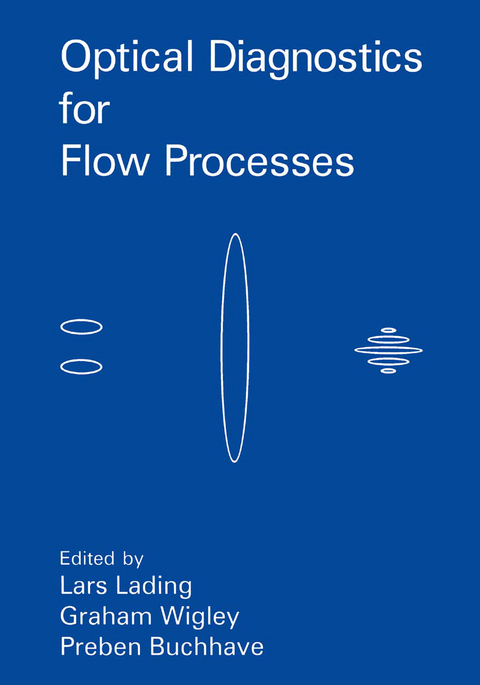
Optical Diagnostics for Flow Processes
Kluwer Academic/Plenum Publishers (Verlag)
978-0-306-44817-1 (ISBN)
The origin of optical methods for fluid flow investigations appears to be nontraceable. This is no matter for surprise. After all seeing provides the most direct and common way for humans to learn about their environment. But at the same time some of the most sophisticated methods for doing measurements in fluids are also based on light and often laser light. A very large amount of material has been published in this area over the last two decades. Why then another publication? Well, the field is still in a state of rapid development. It is characterised by the use of results and methods developed within very different areas like optical physics, spectroscopy, communication systems, electronics and computer science, mechanical engineering, chemical engineering and, of course, fluid dynamics. We are not aware of a book containing both introductory and more advanced material that covers the same material as presented here. The book is the result of a compilation and expansion of material presented at a summer school on Optical Diagnosticsfor Flow Processes,held at RiS0 National Laboratory and the Technical University of Denmark in September 1993. The aim of the course was to provide a solid background for understanding, evaluating, and using modem optical diagnostic methods, addressing Ph. D. students and researchers active in areas of fluid flow research. The disciplines represented by the participants ranged from atmospheric fluid dynamics to biomedicine.
Fluid Systems and Analysis.- The Flow System Interface.- Computational Fluid Dynamics Interface.- Background Material.- Optics Toolkit.- Processing of Random Data.- Laser Anemometry and Particle Sizing.- Principles of Laser Anemometry.- New Optoelectronic Technologies for Laser Anemometers.- New Technologies for Laser Anemometers.- Phase Doppler Anemometry and Its Application to Liquid Fuel Spray Combustion.- Two Phase Flow Measurements.- Collective Light Scattering: An Introduction.- Whole Field Measurements.- Particle Image Velocimetry.- Correlation Methods of PIV Analysis.- Visualization of Coherent Structures.- Three-Dimensional Particle Velocimetry.- Flow Pattern Identification and Neural Network Processing.- Tomographic Methods in Flow Diagnostics.- Inelastic Methods.- Inelastic Scattering Laser Diagnostics; CARS, Planar LIF and Planar LII.
| Erscheint lt. Verlag | 31.12.1994 |
|---|---|
| Zusatzinfo | VIII, 398 p. |
| Verlagsort | New York |
| Sprache | englisch |
| Maße | 178 x 254 mm |
| Themenwelt | Naturwissenschaften ► Physik / Astronomie ► Atom- / Kern- / Molekularphysik |
| Naturwissenschaften ► Physik / Astronomie ► Plasmaphysik | |
| ISBN-10 | 0-306-44817-3 / 0306448173 |
| ISBN-13 | 978-0-306-44817-1 / 9780306448171 |
| Zustand | Neuware |
| Haben Sie eine Frage zum Produkt? |
aus dem Bereich


